According to an article in a coal trade publication last week, a private firm has announced plans to open a coal export terminal in Guaymas, Mexico. The project aims to ship 30 million tons of coal per year to Asia, sourced from the Powder River Basin and other mining regions in the western US.
I have three words to describe the Guaymas coal export plan: high risk gamble.
In today’s market, coal companies simply can’t ship PRB coal to Asia through Guaymas without losing their shirts. The transportation costs are too high, and the prices that PRB coal would receive in Asia are too low.
There are three key reasons that the Guaymas port represents such a poor option for exporting Powder River Basin coal:
- Longer rail route. It’s 1,500 miles from Montana’s Spring Creek mine—the best PRB coal for the Asian thermal coal market—to the Westshore terminal in southeastern British Columbia. But shipping Spring Creek coal to Guaymas entails a rail trip of more than 1,750 miles. Assuming that rail companies charge about 1.54 cents per ton-mile, plus a fuel surcharge, to ship coal to Westshore, the longer rail trip to Guaymas could tack on $3-$4 per ton to the cost of coal exports.
- Potential for rail line switching fees. Some PRB mines have access to both the Union Pacific and the BNSF rail lines. But the highest-energy PRB coals—the ones that fetch premium prices in Asian markets—are serviced only by BNSF. Yet to reach Guaymas, that coal would have to be switched to the Union Pacific line, and then to the Ferromex rail line at the US-Mexico border. Even if switching to Ferromex is free, switching from BNSF to Union Pacific apparently costs $295 per rail car, or an extra charge of nearly $3 per ton of coal.
- Longer ocean voyage. Shipping coal south to Guaymas increases the shipping distance to likely import terminals in Southern China and South Korea by about 1,700 nautical miles. enough to increase shipping costs by about $3.50 to $4 per ton.
Combining those three disadvantages, moving the best PRB export coal through Guaymas would boost export costs by $10 to $11 per ton. Yet the Powder River Basin’s best-situated company, Cloud Peak Energy, is already losing money sending coal to Asia. Shipping that coal through Guaymas would only make the red ink redder. And if any large coal terminal does wind up being built on the west coast, coal companies could shun Guaymas, stranding those assets permanently.
Given all these disadvantages, why are terminal developers still pursuing coal exports at Guaymas? One posible answer is that this represents a Hail Mary pass—a desperate gamble that Pacific Rim coal prices will someday rise enough to make the venture profitable. A second answer is that coal companies are getting very worried about the prospects for ports in Oregon and Washington. Going south only makes sense if there’s absolutely no way to go west…so the coal industry’s interest in a southern passage to Asia may reveal the coal industry’s growing concern about the political prospects for the proposed ports on the Northwest coast.
Sources:
Rail costs: Rail distances from BNSF’s rail distance calculator, the BNSF rail map, and Google Maps. I assumed that coal would be routed via Deming New Mexico, per this source’s observations about similar routing for iron ore. Rail line switching fees from Union Pacific.
Ocean shipping costs: Ocean shipping distance from Sea-distances.org, SeaRates.com, and PortWorld.com. Bulk cargo vessel hire rates from DryShips.com. Bunker fuel costs from ShipAndBunker.com.

![by By user:Intersofia (Own work) [Public domain], via Wikimedia Commons](https://www.sightline.org/wp-content/uploads/2014/05/800px-Guaymas-Sonora.jpg)
![by By user:Intersofia (Own work) [Public domain], via Wikimedia Commons](https://www.sightline.org/wp-content/uploads/2014/05/800px-Guaymas-Sonora-563x376.jpg)

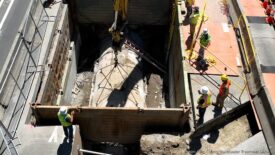
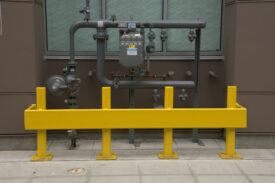
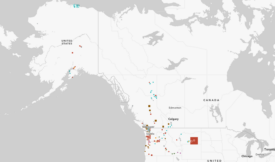
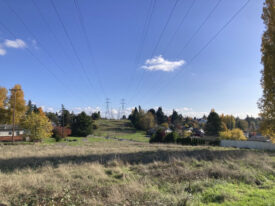
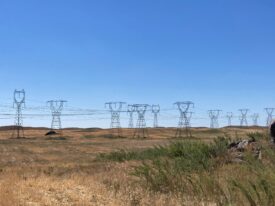

Natalie
My husband and I lived in and taught English in Guaymas for a year in 2006-7. It is a really beautiful area, where the Sonoran Desert begins to transition into the tropics. Dolphins can frequently be seen playing in the bays. The cacti there are huge and amazing. The geologic formations are, in some places, astounding. Thanks for the information. The tourism and quality of life there would be significantly marred by a coal export facility.
Barbara Keller
Clark –
The thing is that Puerto de Guaymas planning docs show this coal terminal expansion in the works for years now. Also Carlos Slim was in the area over Easter saying he would be making significant investments in the area (though the local paper did not state in what he would be investing and may not be a reliable source).
I agree with your “Hail Mary Pass” thinking, but if I were an arrogant coal executive I might also be thinking that bringing up an alternate port scenario would intimidate NW politicians/regulators.
I don’t want this coal to go anywhere, but our fight has to be here in the NW. Lots of Mexican projects start enthusiastically and then fizzle – just visit Mexico and you will see the half-finished skeletons of projects past. We still have a fight on our hands here though. And if we start to act on our premature thinking that we have won by letting up, we will lose.
Thank you for getting the info out more widely though.
Barbara